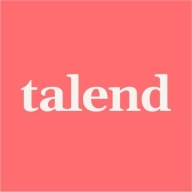


Find out what your peers are saying about Amazon Web Services (AWS), Informatica, Salesforce and others in Cloud Data Integration.
We see return on investment from this solution in terms of time; time reduction or cost benefits is what we are getting very good results from.
We actually achieved the first 18 months worth of work in the first six months.
In a scenario where employing three resources for three months might cost approximately $18,000 to $20,000, Zapier provides substantial cost savings.
Due to the tool's maturity limitations, solutions are not always simple and often require workarounds.
The response time is pretty good because we have someone in-house, who is an expert from Informatica, in our team who can help us with any sort of queries usually.
If they are unsure how to resolve an issue, they keep customers informed, providing updates about progress and ensuring communication with the product team to deliver accurate responses.
Their technical support is good; they respond promptly and are very helpful.
This can help if you need assistance, as you can communicate with the community and support system, and most issues are already resolved by AI.
Sometimes, in my early days, when I was stuck with something, they helped me solve these issues, and even helped me solve some of my automations.
As a SaaS platform, IDMC is quite scalable and provides complete flexibility.
I find Informatica Intelligent Data Management Cloud (IDMC) to be a sustainable and scalable solution.
Zapier is suitable for small or simpler automation but not for complex ones.
Scaling it gets quite expensive, and while I cannot evaluate it purely from a technology perspective, compared to Workato, I would give Zapier a seven for scalability.
Stability is crucial because IDMC holds business-critical data, and it needs to be available all the time for business users.
We have not encountered many issues with remote engines, and the interfaces are properly developed.
In my current company, we had significant challenges with Zapier regarding maintenance, as Zaps were often broken, not necessarily due to Zapier, but due to changes in the input variables.
The tool needs to mature in terms of category-specific attributes or dynamic attributes.
I also want to see integration with other Informatica products, such as IICS, to leverage the metadata from EDC.
The licenses are too expensive compared to before, which is why customers are now preferring other data metadata management tools like OneTrust, Collibra, and Azure Purview.
On the flip side, that is one of its amazing strengths, as you are not locked into a very rigid way of doing something.
Data management could also encompass APIs and real-time streaming data integration.
The error message options in the dashboard should be improved. It should be user-friendly so that beginners or non-technical users can figure out the problems and solutions on their own.
You can build similar or dependent automations in one Zap, which helps with understanding the process without switching between different records.
I would appreciate if there would be a feature where we can use actions right after loops. Currently, you cannot use any other action after the loop. Everything needs to be within the loop.
It ranges from a quarter million to a couple of million a year.
The licenses are too expensive compared to before, which is why customers are now preferring other data metadata management tools like OneTrust, Collibra, and Azure Purview.
I think the costs are reasonable for the kinds of features that Informatica Intelligent Data Management Cloud (IDMC) has.
The pricing is in accordance with market standards and even lower in some cases.
The pricing of Zapier is slightly higher compared to other market automation tools such as Pabbly, Make.com, and N8N, which have good features but are priced lower than Zapier.
The platform's ability to pull in data from other platforms without the need for an additional integration tool enhances its appeal.
Informatica Intelligent Data Management Cloud (IDMC) can connect to pretty much any application, including Oracle Analytics and Power BI, and it works quite seamlessly.
In on-premise, we call it EDC for metadata management, while in cloud-based technologies, it is known as the Metadata Command Center, which serves the same purpose as EDC concerning CDGC.
I have successfully requested the necessary patch from Talend support multiple times to align different studio versions across the team of developers.
They have approximately 7,000 connections.
Even a person with no technical knowledge can use Zapier to create automations.
The automation capabilities are impressive.



| Company Size | Count |
|---|---|
| Small Business | 42 |
| Midsize Enterprise | 24 |
| Large Enterprise | 134 |
| Company Size | Count |
|---|---|
| Small Business | 9 |
| Midsize Enterprise | 5 |
| Large Enterprise | 8 |
| Company Size | Count |
|---|---|
| Small Business | 29 |
| Midsize Enterprise | 10 |
| Large Enterprise | 7 |
Informatica Intelligent Data Management Cloud (IDMC) integrates data quality, governance, and integration with flexible architecture. It supports multiple domains and a data models repository, delivering AI-enhanced data management across cloud-native platforms.
IDMC provides seamless integration and governance capabilities that support diverse data environments. Its comprehensive suite includes customizable workflows, data profiling, and metadata management. AI features, a data marketplace, and performance scalability enhance data management. While its interface poses challenges, its robust matching and cloud-native integration facilities are essential for complex data ecosystems. Users employ IDMC for connecting systems, ensuring data quality, and supporting data compliance but seek better pre-built rules, services, and improved connectivity, especially with platforms like Salesforce. Licensing, cost, and added AI functionalities are areas for potential refinement.
What are the key features of IDMC?IDMC is implemented across industries for data integration, metadata management, and governance. Organizations use it to connect systems, migrate data to cloud environments, and maintain data quality. They manage master data and automate business processes, facilitating data lineage and ensuring compliance with privacy regulations.
Zapier is a tool for primarily non-technical users to connect together web apps.
An integration between two apps is called a Zap. A Zap is made up of a Trigger and one or more Actions or Searches.
Whenever the trigger happens in one app, Zapier will automatically perform the actions or searches in another app in order.
Zaps are very lightweight and easy to set up. Zaps do not import or export old data (they only operate on new items created after the Zap is enabled). Zaps are also not kept in sync ("two way syncing") after the Zap is triggered.
Zaps are deceivingly simple if you're used to dealing with complex and difficult integrations. Their simplicity is what enables anyone to create them.